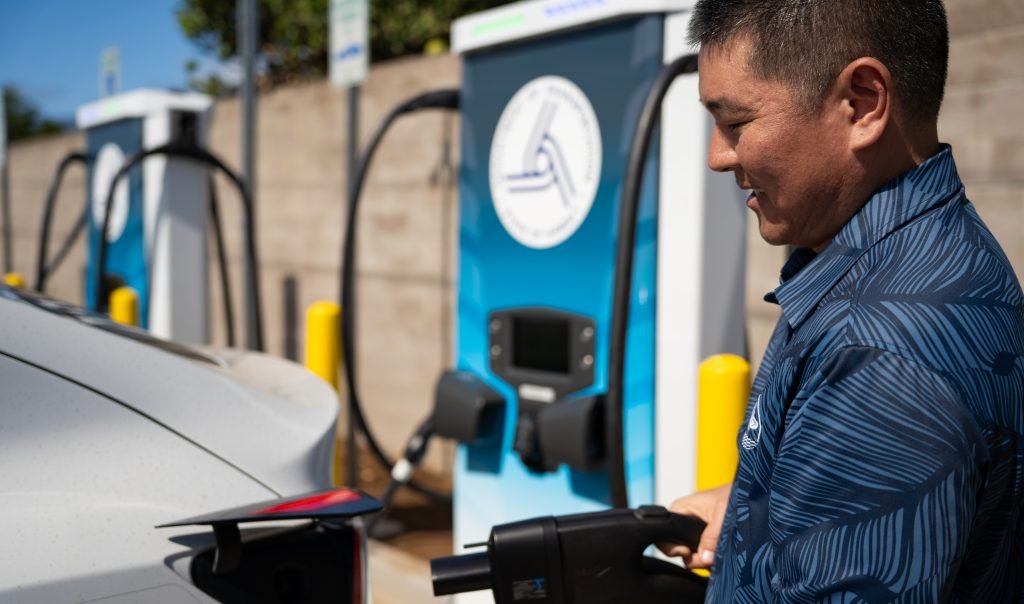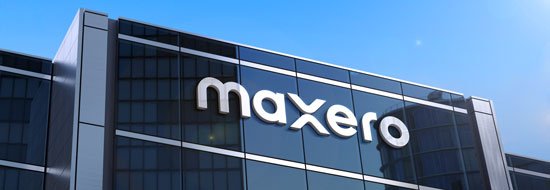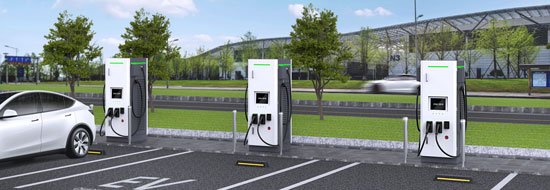In a move to bolster sustainable transportation infrastructure and promote electric vehicle (EV) adoption, Maui County celebrated the grand opening of new electric vehicle charging stations today. The initiative, spearheaded by the Hawaiʻi Department of Transportation (HDOT), marks a milestone in the state’s commitment to cleaner energy and reduced greenhouse gas emissions.
The $3 million Maui project is being funded by $2.4 million of National Electric Vehicle Infrastructure (NEVI) federal funds and $600,000 by the state. HDOT was the first in the nation to secure the charger order through NEVI program funding, in part because of the impact of climate change on the islands and the state’s reliance on imported fuel.
“I’m really just happy for the local community to be able to benefit from this process and this opportunity to be able to help support our initiatives on moving the NEVI program forward, ensuring our partnerships are solid and strong, moving forward on a more resilient approach to mitigating climate change,” said Michael Figueroa, deputy division administrator of the Federal Highway Administration, Hawaiʻi Division.
The NEVI program seeks to accelerate the adoption of EVs, reduce greenhouse gas emissions, help the US lead global transportation electrification efforts and build out alternative fuel corridors. It is in line with President Biden’s commitment to jumpstart the construction of a national network of 500,000 electric vehicle chargers by 2030.
The general contractor for the projects on Maui is Sustainability Partners Services, LLC, which partnered with Hawaiian Electric, state project manager Holly Yuen, construction manager Annette Matsuda, and sub-contracted Hensel Phelps, Wasa Electrical Services, T.J. Gomes Trucking, Inc., with designer G70.
“Sustainability Partners is really proud to be party of a project like this,” said Benson Medina, infrastructure specialist at Sustainability Partners Services. “Our job at Sustainability Partners is not only to install all of this equipment and bring these vehicles, but now it’s time to preserve and protect, perpetually. What Sustainability Partners brings to the table is a permanent solution to infrastructure. We’re hoping that this is one of the trends where we can put these and other types of infrastructure all over our state.”
According to Arnold Albiar, who headed the project for Sustainability Partners, the biggest challenge was long lead times on equipment like switchgears and transformers; however, due to the collaboration of HECO and sub-contractors, the project was finished in less than four weeks. “There were no hurdles that weren’t easily overcome or supported by the state Department of Transportation,” said Albiar.
Blessing and dedication
Kahu Kalani Wong presided over the blessing and dedication of the new EV charging station. He began with a testimony of his own experience using EVs.
“Right now, how are you going to make it from one side of the island to the other, and the challenge that we have is: Where do we get charged?” said Wong. “I’ve been an EV owner for 12 years. I calculated it out. I would’ve bought 7,000 gallons of gas. I hate to do the dollars, plus other maintenance that goes with it.”
In his blessing, Wong related EVs to the ‘Ōlelo No‘eau (traditional proverbs) that says, “He aliʻi ka ʻāina, he kauwā ke kanaka (The land is chief, the people are servants).”
“What do we do to honor this land?” he asked rhetorically. “The truth of that is found in the Bible, where God gives humanity our kuleana (responsibility) of life. And he says he created humanity in his image to watch over the river, fish in the sea, the birds of the sky….We’ll help them out by keeping an eye on them, by keeping our climate change on the lower level.”
Features, specs and pricing

The EV charging station at the Kahului Park and Ride consists of four 150kW chargers along Kūihelani Highway, in the vicinity of the Puʻunēnē Avenue, Mayor Elmer F. Cravalho Way, and Maui Veterans Highway intersection.
As a Level 3 Charging Station, the new chargers can fill a battery at a rate of 75 to 1,200 miles per hour, meaning it could top off an empty battery in as fast as 30 minutes. This is already much faster than the existing public chargers on the island, which can take up to several hours to top off an empty battery.
“Level 3 works on almost all cars,” said Robin Shishido, HDOT Highways Division deputy director, regarding the new station. “But some of the cars, especially the older ones, are restricted on how much power you can take in so you may not get the full 150 kWh going into the car. I think the cars have their own regulators in there that kind of manages that power [intake].”
“There are two charging ports on each as redundancy, in case one goes down you can use the other one,” Shishido added. “The first two chargers both have CCS connectors on them. The third and fourth has one, CCS, and one, CHAdeMO, to use one at a time, only.”
Because the adapter for Teslas was only recognized nationwide recently, Tesla-users still need to use the adapter provided by the EV manufacturer on the new chargers for now. “We’re going to see if we can switch out connectors on the first two that have the match. That way Tesla folks don’t need to use a connector,” said Shishido.
In terms of pricing, HDOT determines the price for the user, but Hawaiian Electric Company (HECO) plays a side-role. While HECO is a partner, which has historically owned and operated over 30 charging stations across its service territory, this station is different in that it’s a partnership with the Hawaiʻi Department of Transportation. Therefore, rates might look different compared to other HECO-owned stationes, explained Aki Marceau, HECO director of electrification of transportation.
HECO will still determine rates charged to HDOT, and the electric company will use a a separate, but similar rate to Time of Use (TOU), which often charges less in the middle of the day when renewable energy is abundant, to do this. The rate they are using for the new EV charging station is called CDP, a rate available to all commercial customers who qualify, not just specifically to HDOT, according to HECO Electric Vehicle Customer Specialist Ethan Landy.
While the pricing of the charger has not been released in public, HDOT has announced that the chargers will be free of charge from today until March 10 at 11:59 p.m.
Initial reactions
Two Canadian tourists, who used the charger earlier today, attested to the faster charging speeds.
Canadians Mike Morin and Erin Huckell might have been the first tourists to use Maui’s fast charging station. They happened to be charging their Tesla (rented from Turo) at 10:30 a.m. during the grand opening. Without knowing the they had yet to officially open, the two spotted the fast chargers on their way through town.
“We rented this car for our last day on Maui,” said Morin. “We’re going to go take a tour of the island and wanted something a little more comfortable. We were probably going to go over to the DMV to charge the car, but this is way better. We won’t have to wait for hours. It’ll be like 20 minutes, and we’ll be done.”
EV stations, EV fleets coming soon

After completing its first EV charging station in Hawaiʻi, the state Department of Transportation is now getting recharged to open its next site at Aloha Tower on O‘ahu.
HDOT has announced a 10-more of these NEVI-funded, fast charging stations coming to the state, including one in West Maui. The final location has yet to be finalized, but officials say they are looking now at the area near the Lahaina Civic Center.
In addition to EV charging stations across the state, HDOT has obtained a contract to replace vehicles in its fleet with electric vehicles. According to officials, there are at least 43 Teslas and 45 Ford F-150 Lightnings in the highway fleet statewide. HDOT has tested the use of EVs since 2021 and plans to add 83-more trucks in the next year, for a total 128 EV trucks.
“On these cars in two years, I think the maintenance has been windshield wiper fluid, putting air in the tires, and changing the cabin air filters. I mean very, very good,” said Shishido. “And that was a big part of saving. We got rid of our older 22-year-old regular gas vehicles, which cost up to like $2,500 per year in maintenance.”
[ad_2]
Source link




